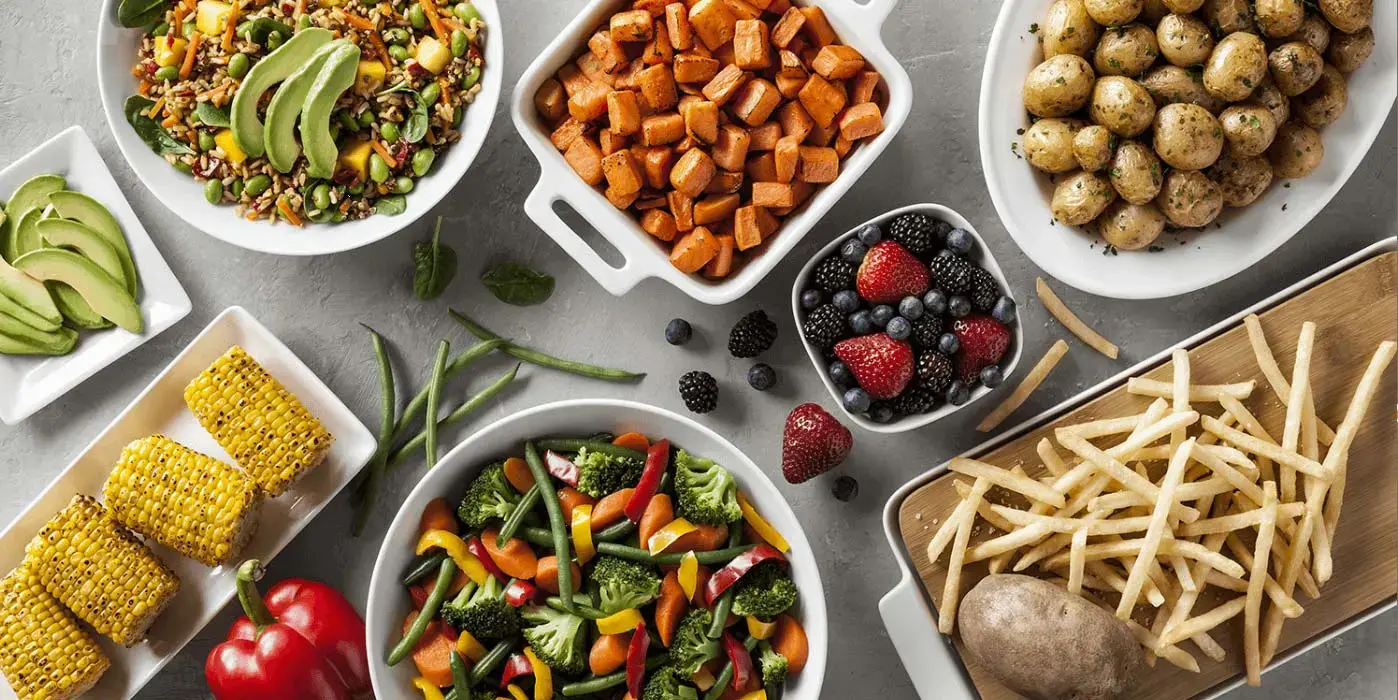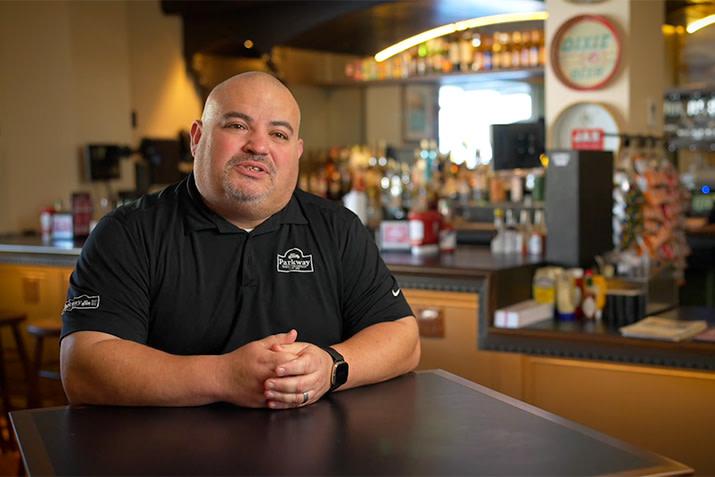Historias de cocina
Diferenciarse o desaparecer: cómo las papas a la francesa únicas ayudan a un operador de Jersey Shore a destacarse
9/28/2020

La competencia siempre ha sido difícil en la industria de los restaurantes. Pero es en especial difícil en Jersey Shore cerca de Stone Harbor, Nueva Jersey. Allí, decenas de operadores tienen solo 15 semanas para generar la mayor parte de sus ganancias anuales antes de que finalice la temporada de verano.
“Lo llaman el camino de las siete millas. Hay una gran cantidad de restaurantes aquí. Por lo tanto, debes ser único” explica Brett DeNafo, propietario de Stone Harbor Bar & Grill, un restaurante informal en el corazón de Stone Harbor. “Tienes que traer artículos nuevos de la mejor calidad. Trato de estar un paso adelante de los demás todo el tiempo. Siempre he sido así”.
DeNafo, un restaurantero que lleva muchos años en Jersey, estudia a su competencia y controla de cerca las opciones que sirven. Con el tiempo, aprendió que hay una categoría de productos que merece atención especial en la búsqueda de marcar una diferencia: las papas a la francesa.
Tener formas de papas a la francesa poco comunes es fundamental
DeNafo cree que la calidad de sus papas a la francesa es tan importante como la de los mariscos, las hamburguesas y los batidos que encabezan su menú.
“Las papas a la francesa son extremadamente importantes para nuestros clientes”, explica. “Si son malas, arruina todo”.
Hace poco, DeNafo decidió que era hora de modernizar su selección de papas a la francesa cuando notó que todos sus competidores parecían estar sirviendo unas similares a las suyas.
“Investigué y descubrimos este corte ondulado Blue Ribbon que nadie en el área tiene y lo incorporamos”, cuenta DeNafo. “Cuando se sirve una hamburguesa en un plato, se ve totalmente diferente. No vas a encontrar papas a la francesa como esas en el área. Anoche recorrí las mesas y los clientes me decían lo geniales que son las papas a la francesa”.
Además de su atractivo visual, el desempeño práctico de Blue Ribbon fue clave en su valoración.
“Analizo tres aspectos: qué tan bien retienen el calor, cuánto tiempo mantienen la crocancia y cómo saben”, explica. “Se tarda 10 o 15 minutos en comer un sándwich. Si las papas a la francesa no resisten ese tiempo, el sándwich tampoco lo hará.
“Le diría a las personas que hagan una prueba de sabor”. Compara el corte ondulado Blue Ribbon de Simplot con otras marcas. Haz que tus empleados también las prueben. “No tengo dudas de que elegirán las de Simplot”.
No se ven unas papas a la francesa de camote como este todos los días
“Las papas a la francesa de camote son definitivamente un producto popular en este momento. Si no tienes papas a la francesa de camote en tu negocio, no lo estás haciendo bien”, dice DeNafo.
Pero no cualesquiera papas a la francesa de camote bastará en su restaurante.
Ansioso por diferenciarse, DeNafo decidió cambiar su camote Simplot Sweets® de corte recto por el corte lattice de la línea Simplot Sweets®. Junto con la forma visualmente atractiva, obtiene el beneficio adicional de mayor tiempo de conservación y crocancia.
“Ese es otro gran producto que se conserva muy bien. Es algo único”, señala. “No ves muchas papas a la francesa de [camote] corte lattice o tipo waffle, así que cuando los presentamos, la gente se sorprende y expresa que le gustan. Quienes piden ese plato comen hasta terminarlo. Eso siempre es una buena señal. Se ha convertido en algo muy importante”.
¿Tiene sentido pagar más por las papas a la francesa?
El precio siempre influirá en las decisiones de compra. Pero, según DeNafo, no se trata solo del precio por libra. Sabe que las papas a la francesa son el acompañamiento favorito en los Estados Unidos en todos los grupos etarios. También son relativamente baratas dado el valor que aportan y los precios que alcanzan.
“Incluso si compras una papa a la francesa mejor y cuesta más dinero, no es mucho más. Las papas a la francesa no cuestan nada”, explica. “En comparación con lo que pagas por la carne, el pollo o los mariscos, las papas a la francesa son siempre el costo más bajo, por lo que es un artículo con una rentabilidad muy alta del que se gana mucho dinero.
“Entonces, a mí no me preocupan las papas a la francesa. Solo quiero asegurarme de tener la calidad adecuada de papas a la francesa porque creo que hay que tener productos buenos. Y si no ofreces un buen producto, ese cliente no volverá a tu restaurante”.
DeNafo aprovecha aún más la rentabilidad de su corte ondulado Blue Ribbon® de Simplot en aperitivos populares cargados de papas a la francesa.
“También hago papas a la francesa cargadas a las que les ponemos queso cheddar Colby Jack, tocino y cebolletas. Las cocinamos en el horno. Ese es un producto de muy bajo costo al que se le saca mucho dinero”, dice.
Por lo tanto, tiene sentido que DeNafo elija quién hace sus papas a la francesa.
“Cuando miras a Simplot, ves la calidad”, agrega. “No creo que haya tenido una bolsa de papas a la francesa malas en 20 años. Nunca he tenido una bolsa de papas a la francesa que tuviera todas las piezas pequeñas. Nunca he tenido una caja que haya estado destrozada. El control de calidad; creo que es lo que la gente no entiende”.
Confiar en la amplia cartera de productos de Simplot para reducir su mano de obra en la cocina
“La mayoría de mis productos aquí son frescos. Todos los mariscos, las aves y la mayoría de los vegetales son frescos. Cuando trabajas con productos frescos, tienes que cortar las zanahorias. Las cocinas al vapor. Hacer eso implica mucho más trabajo”, explica DeNafo.
Sin embargo, gran parte de su personal de cocina está conformado por estudiantes universitarios que regresan a estudiar a fines de agosto, antes de que haya finalizado su temporada de 15 semanas. DeNafo supera este desafío al usar vegetales congelados Simplot para platillos específicos con el objetivo de reducir la mano de obra de la cocina vs. la que se necesita con los frescos.
“Solíamos saltear zanahorias y frijoles verdes y asar nuestras propias papas. Este fue el primer producto congelado que incorporamos.
“Fiesta de maíz y frijoles negros RoastWorks. Eso es lo que uso, y el producto es excepcional. Ese es un producto congelado y es genial, porque no se nota”, dice. “Uno de mis representantes me contó, me comuniqué con Simplot y luego recibí algunas muestras. Nos encantaron de inmediato. Los rostizados son un poco más oscuros en el maíz, lo que le da un poco más de color al platillo.
“Solíamos saltear zanahorias y frijoles verdes y asar nuestras propias papas. Este fue el primer producto congelado que incorporamos. Incluso si se tratara de un [restaurante] de alta cocina de alto nivel, probaría el producto”, comenta DeNafo.
El hecho de que pudiera obtener un producto así de uno de sus proveedores favoritos fue mucho mejor.
“Simplot ya no es solo una compañía de papas a la francesa. Está bueno poder obtener otros productos de ellos porque ya tenemos una excelente relación”, cuenta DeNafo. “Cuando ofrecen más productos, eso me facilita la vida, y sé que no van a poner su marca en uno que no sea de buena calidad”.
- Beneficios de lo congelado
- Colegio y universidad
- Delicatesen
- Desde la cocina de prueba
- Entrega
- Festividades
- Historias de cocina
- K-12
- Mano de obra y personal
- Mercadeo
- Minorista
- Noticias
- Papas a la francesa
- Planificación de menú
- Productos nuevos
- Recursos sobre la Covid-19
- Restaurante de servicio completo
- Restaurante de servicio limitado
- Sostenibilidad
- Tendencias alimentarias
- Trend Feast
- Vegetales
- Healthcare



